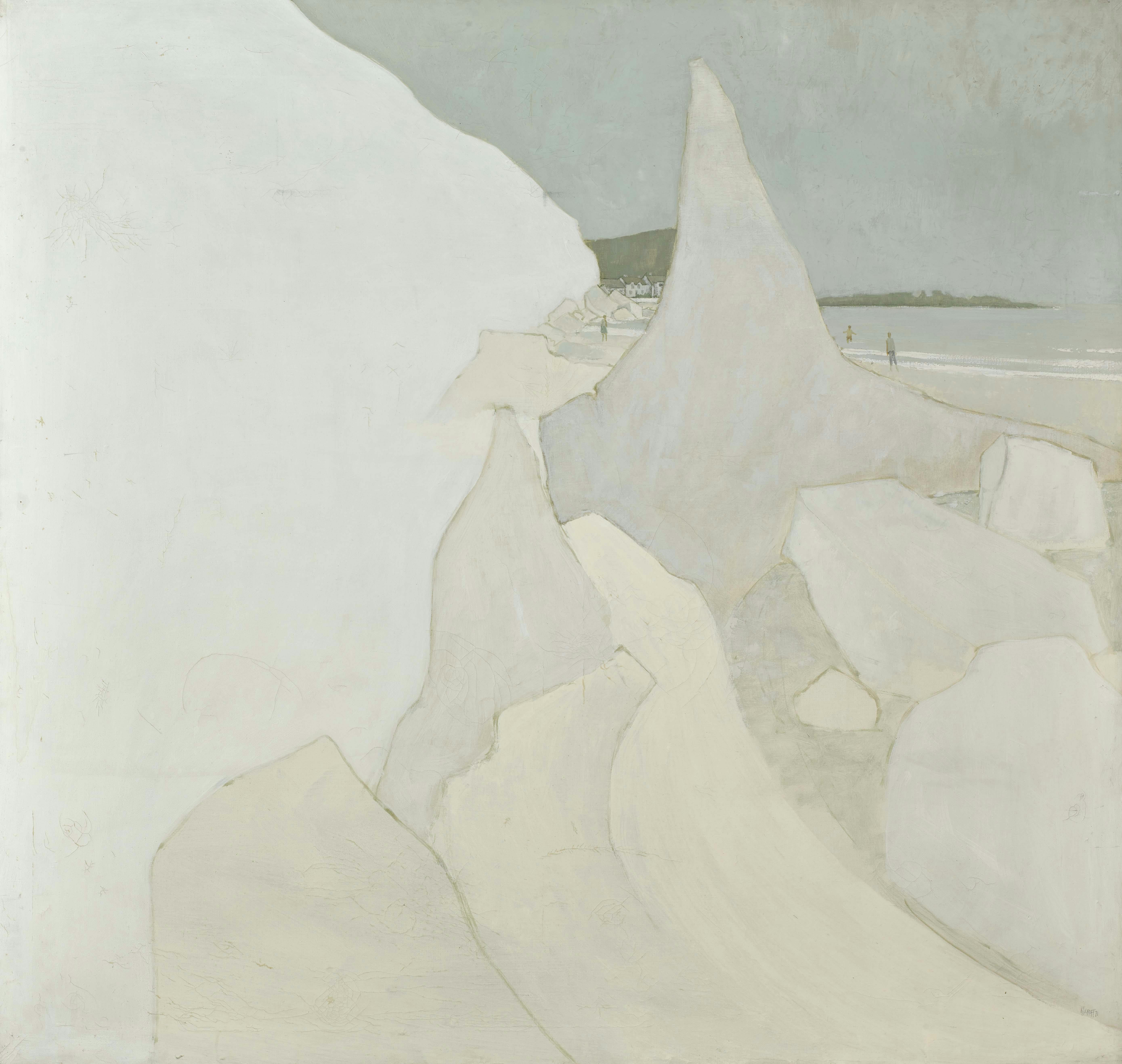Richard Croft (b.1935)
Portbradden, Whitepark Bay (1971)
Oil on canvas
120cm x 127cm
Collection of the artist
Born in London in 1935, and educated at Bromley and Brighton Colleges of Art, Richard Croft moved to Belfast in 1959 to teach art at Dunlambert School, Fortwilliam before becoming Head of Art at Annadale Grammar School.
In 1966 he won a commended prize in the Gallagher Portrait Competition and was then elected a Royal Ulster Academician in 1967, later becoming President of the Royal Ulster Academy of Arts (R.U.A.) from 1997–2000. He is a founder member of Group 63 and the Octagon Gallery, Belfast. His many one person shows include the Picolo Gallery, Belfast in 1960, the Council for the Encouragement of Music and the Arts (CEMA) and the Northern Ireland Arts Council Galleries during the 1960s and 70s. Solo shows also include Oxford University, Queen’s University Belfast, The Davis Gallery, Dublin and a number of shows in the Caldwell Galleries in Belfast.
Croft had a touring retrospective exhibition which started in 2003 in the Naughton Gallery at Queen’s University Belfast and visited Lisburn, Down Arts Centre and Armagh Museum. His work has been in numerous group shows including the R.U.A. and Royal Hibernian Academy (R.H.A.) annual exhibitions and the Irish Living Art exhibitions in the 1960s and 1970s. He was also represented in the Still Life show at the Albemarle Gallery, London in 1988 and the Thackery Gallery, London in 1980.
His work is included in many collections, both public and private, including the Arts Council of Northern Ireland, the National Self-Portrait Collection of Ireland at Limerick University, the Government of Northern Ireland, The Irish Embassy in Beijing, the Northern Bank, Belfast Education and Library Board, Down County Museum, Ulster Television, London University, Oxford University and the Queen's University of Belfast. In 1986 Croft ‘retired’ to paint full-time in his studio in Dundrum, Co. Down. He describes his method of painting as “funambulism or tightrope walking”, and the artist switches between abstraction and realism.
This piece was born from Croft’s entrancement by images from the north coast of Co. Antrim, in particular Whitepark Bay with Portbraddan at one end and Ballintoy at the other. The dazzling brightness of the sand, sea and the limestone cliffs was the source of his work in the 1970s. One of a series of ‘White’ paintings, the artist describes this work as, “perhaps, the one that says it all for me.”
